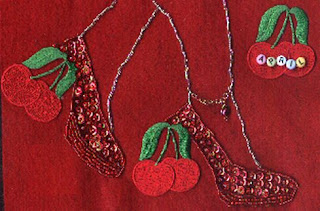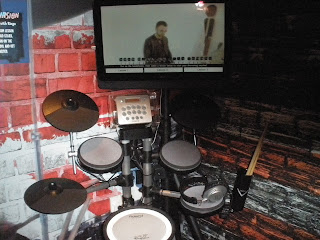As the Centenary of Armistice Day Approaches, Honoring My Great Uncle
John Sweeney, my great uncle, brother of my paternal grandmother, and known to all as Jack - to save confusion with his Dad, also John.
He served with the 3rd Pioneer Battalion on the Western Front and was killed in action and is buried in France.
The tragedy of his death was compounded with the death of his wife, shortly after the end of the war. His 3 sons were then placed in an orphanage in Geelong.
The Sweeney Family came to Australia from Ireland as immigrants in 1876 and settled in Melbourne.
John was the first child to be born in Australia, his two older siblings, Peter and Mary were born in Ireland and he had three younger sisters.
John was born in Pharan on July 11 1880, he joined the Garrison Artillery in 1899 when he was 19 yrs. of age, this was just before the Boer War, and served with them for about 3 years.
John’s service record has his occupation as a driver. The family had a Hansom Cab business and John and his brother Peter drove the cabs along with their Father.
John married Ellen (Nellie) Bateman on 3rd February 1909.
At the time, he enlisted for service in WW1 on 20th March 1916. He and Ellie had 3 sons, John Patrick 6 yrs.; Peter James 4yrs; and Phillip Joseph 1yr.
John joined the 3rd Pioneer Battalion. The Training Camp was near Broadmeadows in Victoria.[1] The Pioneers were an engineering unit but training as an infantry unit. Many specialized tradesmen where selected for the unit. John’s experience with horses may have been his special skill set.
The Unit Colour Patch was a purple oval inside a white oval and was worn horizontal[2].
John stood at 5 ft. 10 inches and had 3 Vaccination scars and 8 moles on his body, a fresh complexion, grey eyes and light brown hair[3]. Prior to departure for England, the 3rd Pioneer Battalion had a March through Melbourne streets on 10th May. On Sunday 21st May they were presented with their Colours at a ceremony at the Melbourne Cricket Ground, followed by a march and service at St. Paul’s Cathedral.
[4]
The Battalion sailed to England aboard HMAT (His Majesty’s Australian Transports) “Wondilla” on the 6th June 1916. Family and friends were there to see them off, amid much excitement, streamers were thrown between ship and shore and held onto until they broke. The destination was “Unknown” but after a six-week long voyage, they arrived in Plymouth on 26th July 1916.
On 25th November, they then proceeded to Southampton and were ferried across the channel aboard the “Caesarea” or the “Nirvanna” with all lights out and an escort of destroyers to Havre.
John was attached to the 3rd Division Headquarters from 3rd November 1917.
This unit was involved in general trade work in Armentieres and surrounding areas.
A popular song of the times was “Mademoiselle from Armentieres” and I can imagine our boys singing it raucously.
The Diggers joked that AIF stood for “Admired in France”. [6]
By order of their commander, Major General Monash, the men of the 3rd Division wore the brim of their hat flat and not looped up on the left side as in other divisions.[7]
On the 1st March 1918, John re-joined the 3rd Pioneer Battalion from Detachment then again on the 9th March was transferred back to 3rd DHQ.
John went on Leave to England from 16th March 1918 until 6 April 1918 and on arrival back in France was once more attached to 3rd DHQ.
On the 8th June 1918, John was transferred back to 3rd Pioneer Battalion, and it was noted on his service records, he was due two blue chevrons.
These were embroidered or woven inverted chevrons worn above the cuff on the right arm.
For each year of war service, a blue chevron was awarded and those men who had embarked in
1914 received a red chevron to indicate that years’ service.[8]
War Records are sketchy as to where exactly a soldier is located at any given time, so I have come to conclude, that he was part of the second Battle of Bapaume.
It was the aim of this battle to force the Germans back to the line of the Somme. This attack began on 21 August. After seeing off a German counterattack on 22nd August, the British advance forced the Germans to retreat to the Somme.[9]
On 22 August 1918 ‘zero hour’ was 4.50 a.m. and it was the first day that the 3rd Pioneer Battalion was used as an attacking unit. It was a very hot summer’s day and John was wounded early in the battle. He was transferred to the 9th AFA (Australian Field Ambulance) and then sent to 55th CCS (Casualty Clearing Station) where he died of “Shrapnel Wound to Buttock and penetrating Abdomen”.
John Sweeney was buried 1st September 1918 at Daours Communal Cemetery Extension, Somme, France.
Daours is a village of the Somme it is exactly 2 ¾ miles West of Corbie[10] and is north west of Villers-Bretonneau. The Rev H Jones[11] presided over the internment.
John’s personal effects were returned to the family on 17 March 1919 having arrived on the ‘Sardinia’.
The list of these effects is interesting: 2 wallets, 2 discs, 1 purse, 1 gold plated safety razor and blades in case, coins, religious medallions, 2 rosaries, 1 leather cigarette case, 2 metal wrist watches (damaged) and strap, 3 religious books, 1 money belt, 1 knife, 1 metal souvenir horseshoe[12]
Nellie Sweeney had signed over custody of her three sons to her mother in October 1921, shortly before her death.
The 3 sons were then lodged at the St Augustine Orphanage in Geelong. They stayed there until they reached age 16.
St Augustine's Orphanage was established in Newtown in around 1855. First, run by the Friendly Brothers, the Christian Brothers took over the management of the Orphanage in 1878.[13]
Upon leaving the orphanage two of the sons, John and Peter lived for a time with my father’s family in South Yarra, Victoria. After my parents married they moved to Sydney. During WW2 Peter also moved to Sydney and was married in 1949. Peter Sweeney and his wife Marie are my Godparents.[14]
His Medals, one Victory Medal and one British War Medal, were received by his mother in law, Mary Bateman, 20th July 1922 and were kept by her in trust for his eldest son, John Patrick Sweeney, until he came of age.
John’s sister, Mary, had also applied for the medals but was informed they had been given to Mrs Bateman.
Private John Sweeney’s service medals are now with his Grandson John Sweeney.
[1] Keatinge, M. B. B. (1922). War book of the Third pioneer battalion. Melbourne: Speciality Press. p.21
[1] Keatinge, M. B. B. (1922). War book of the Third pioneer battalion. Melbourne: Speciality Press. p.21
[7] Laffin, The Price of Honour, p 144
[12] Service Record of John Sweeney, p. 27
[14] Dinah Patricia Hevey (1950) Baptismal Certificate,1950, St Mark’s Catholic Church, Drummoyne, NSW Privately held by Dinah Jopson Ettalong Beach NSW




Comments